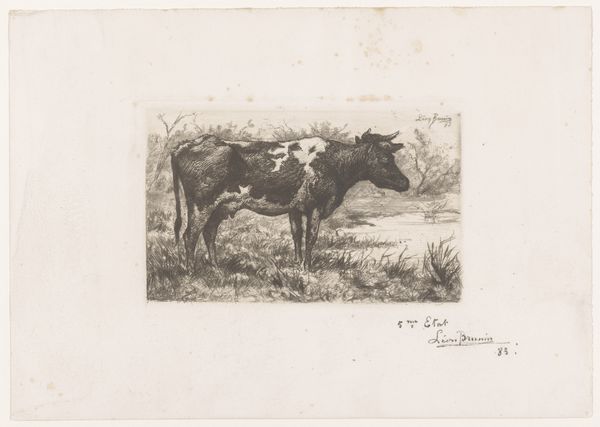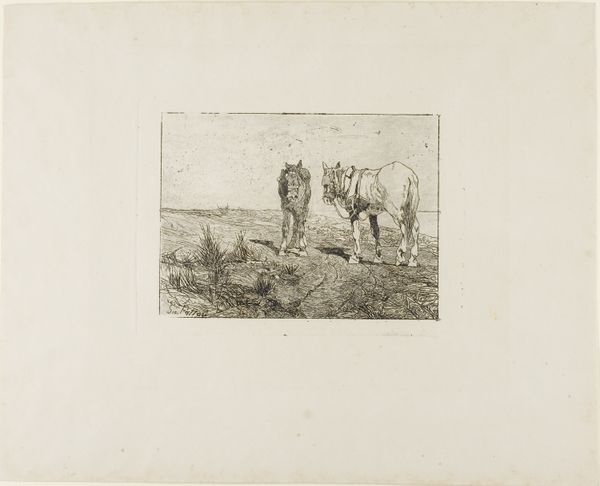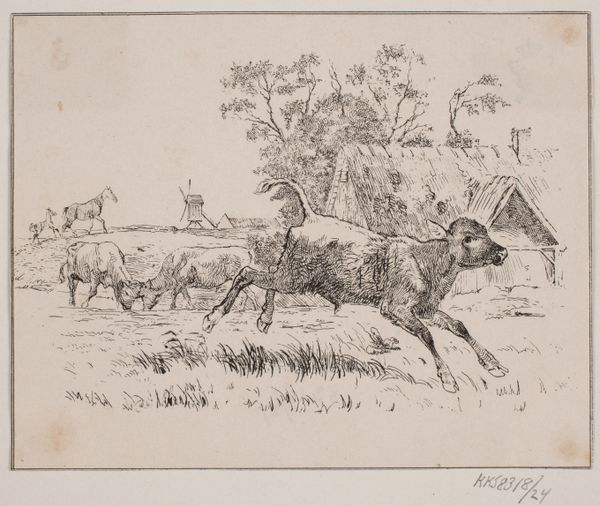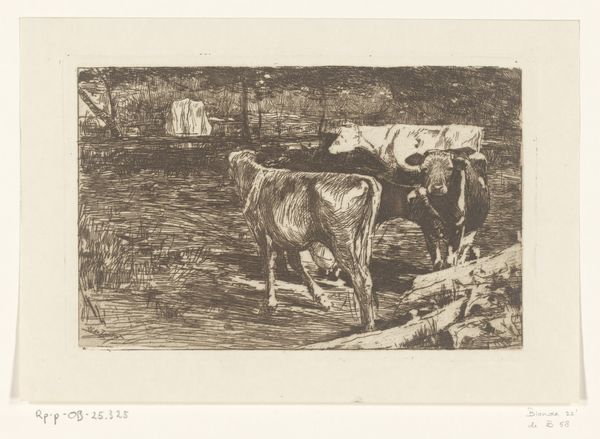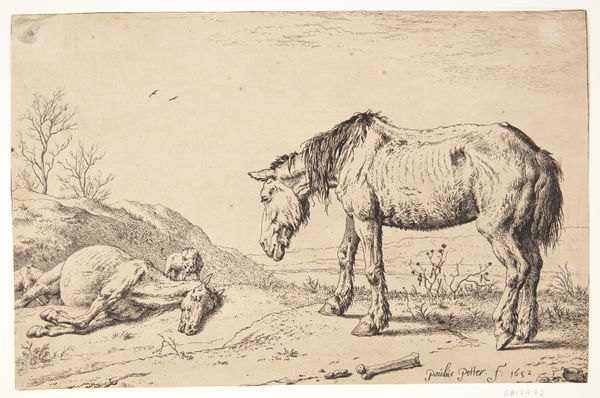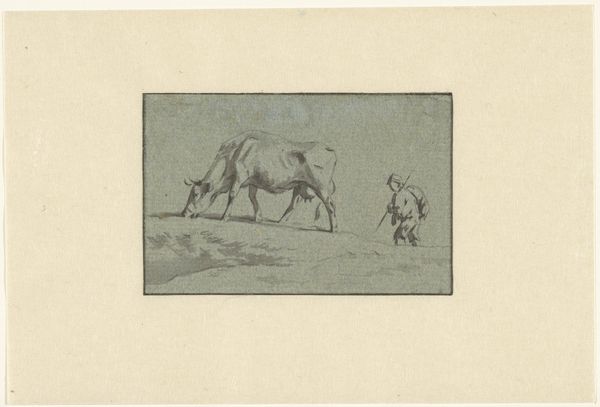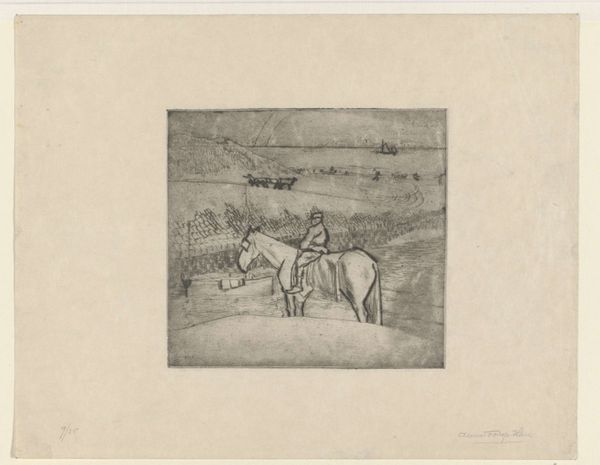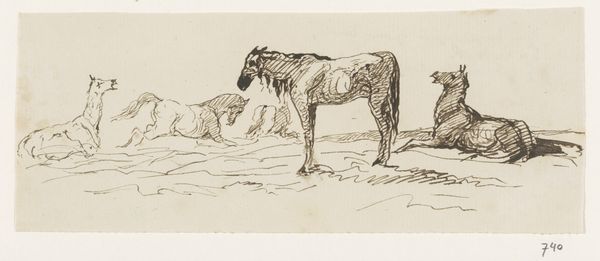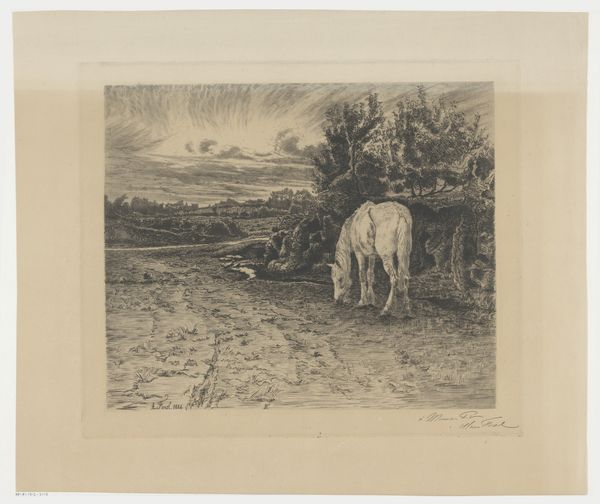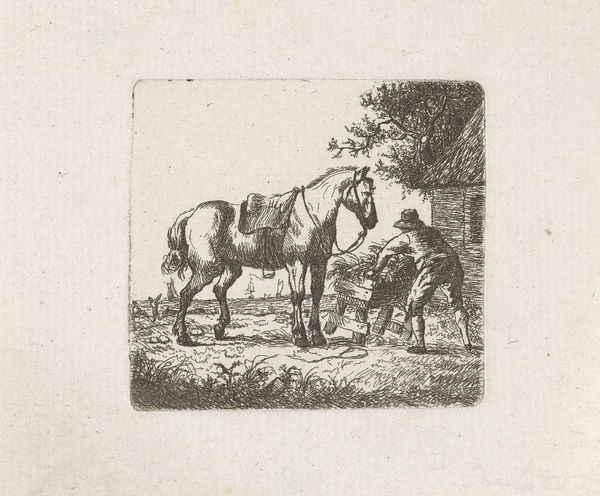
Dimensions: plate: 5 1/16 x 5 11/16 in. (12.9 x 14.5 cm) sheet: 8 11/16 x 11 15/16 in. (22.1 x 30.3 cm)
Copyright: Public Domain
Editor: We're looking at Edgar Degas' "Horses in the Meadow," an etching and drawing from around 1891. The monochromatic palette creates a rather serene and contemplative mood, even with the dynamic, almost scratchy lines used to define the landscape. What formal elements strike you most? Curator: The stark contrast of the two horses, differentiated only through line and density, introduces a powerful binary. One reads as presence, the other, absence. The linear qualities dominate, flattening the landscape to an arrangement of marks on a surface. Notice how Degas contrasts areas of dense hatching in the foreground with the more sparsely rendered hills in the background. Do you find this juxtaposition effective? Editor: Yes, I do. The varying densities almost act as a sort of atmospheric perspective, even without color. It's not a conventional, classically rendered landscape. Curator: Indeed. Note also how the horizon line is unusually high, compressing the sky and focusing our attention on the interaction between the figures and the immediate environment. Consider how this unconventional compositional choice emphasizes the surface qualities of the print itself, refusing traditional illusionism. How does the use of line itself contribute to the expressive quality of the piece? Editor: I think the broken, uneven lines add to the sense of immediacy, like a fleeting glimpse. The texture feels very tangible and raw. Curator: Precisely. It’s a negotiation between representation and the materiality of the medium, showcasing the artist's process as much as the subject matter. Editor: This close examination has really made me appreciate how much Degas communicates through purely formal means, rather than relying on narrative or realistic depiction. Curator: Absolutely. The power lies in the interplay of line, form, and the evocative use of tonal variation.
Comments
No comments
Be the first to comment and join the conversation on the ultimate creative platform.



